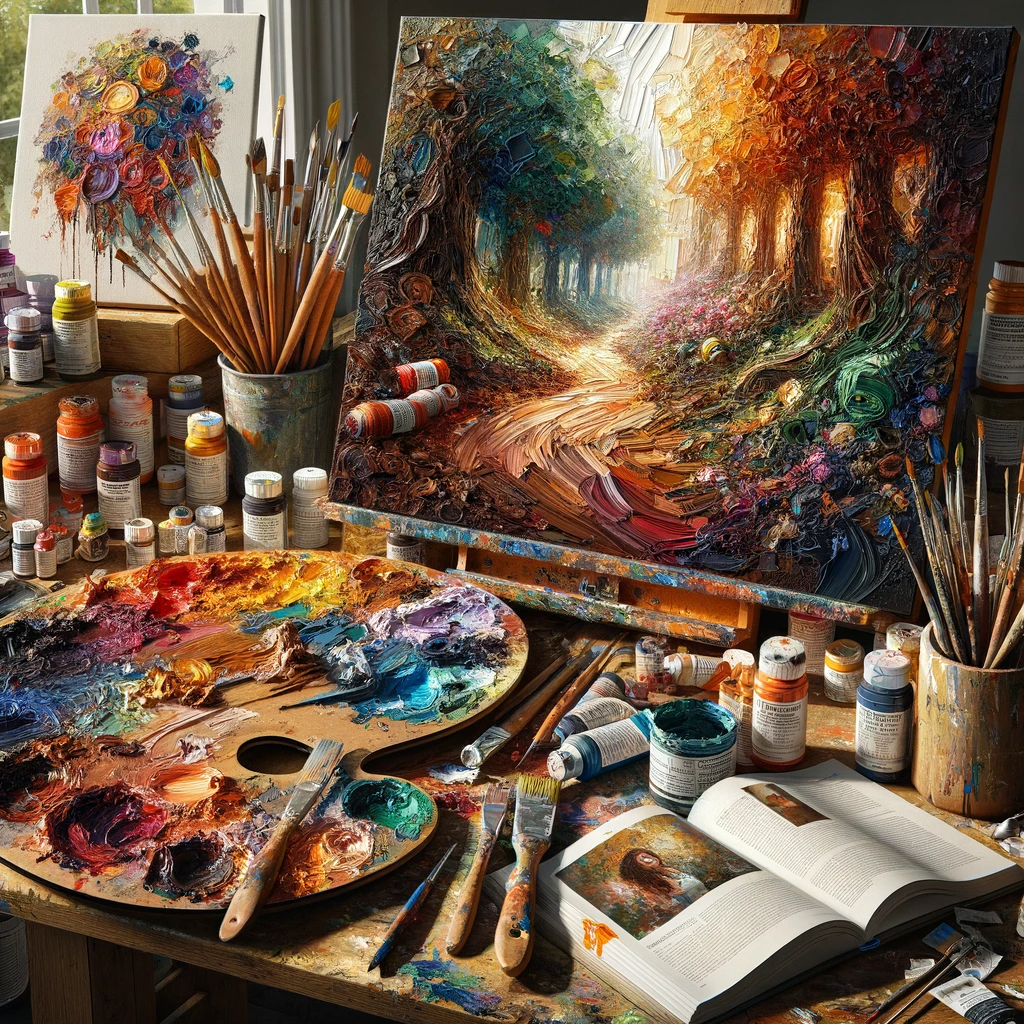Techniques and Tips for Creating Texture in Oil Painting
Texture plays a vital role in oil painting, adding depth and character to your artwork. In this article, we will explore essential techniques and tips to help you create stunning textures in your oil paintings. Whether you are a seasoned artist or just starting out, these insights will elevate your artistic prowess.

Understanding the Significance of Texture
Texture is a critical element in oil painting, inviting viewers to engage with your artwork visually and tactilely. Achieving captivating textures requires exploring various techniques and tools.
Oil Paint and Impasto: A Dynamic Duo
Oil paint’s versatility is well-known, and impasto is a technique that harnesses its potential. Impasto involves applying thick layers of paint to create a textured surface on the canvas. To begin, you will need a high-quality bristle brush and a medium such as linseed oil or liquin impasto to make the paint more manageable.
The Versatility of Palette Knives
Palette knives are indispensable when it comes to crafting unique textures. They enable you to apply paint in thick, textural strokes. Experiment with different palette knife shapes and sizes to achieve diverse effects. Apply this medium with bold strokes to impart a tactile and visually stimulating surface to your artwork.
Layering for Textural Depth
Layering is an effective technique for gradually building texture. Start with an underpainting, a thin layer of paint that establishes your composition. As you progress, add thicker layers of oil paint on top. The contrast between thin and thick layers will yield visually captivating textural effects.
Exploring Dry Brush Techniques
Dry brush techniques involve using a nearly dry brush to gently apply paint to the canvas. This method is ideal for adding subtle texture and highlights to your artwork. It is particularly effective when you want to create fine details or enhance existing textures.
Precision with Masking Tape
Masking tape is a valuable tool for achieving clean and precise textures. Apply it to specific areas on the canvas before painting. Once your work is complete, remove the tape to reveal sharp and well-defined textural elements.
Embracing Mixed Media
Don’t limit yourself to just oil paint. Explore mixed media by incorporating acrylic paint or acrylic modeling paste into your artwork. Acrylic paint dries quickly and can be used to create contrasting textures on top of your oil painting. Acrylic modeling paste can be mixed with oil paint to achieve unique and textural effects.
Incorporating Sand and Other Materials
Many artists experiment with adding sand or other granular materials to their oil paint for added texture. Mix these materials directly into your paint and apply the mixture onto the canvas. This technique can result in intriguing textures that enhance the look and feel of your artworks.
Mastery of the Impasto Effect
Impasto is not limited to adding thickness alone; you can use it to build intricate details and textural effects. By varying the application technique and the amount of paint you use, you can create thick impasto layers that enhance the texture of the canvas and the surface of the painting.
The Art of Thinning and Glazing
In contrast to thick impasto, you can create interesting textures by thinning your oil paint. Adding linseed oil or a solvent to your paint will make it thinner and more translucent, allowing you to build up layers and glazes that reveal different textures underneath. This technique is often seen in the works of old masters.
Embrace Experimentation
In the world of oil painting, experimentation is your ally. Do not hesitate to try different techniques and tools to create a variety of textures in your artwork. Through this process, you will discover techniques that resonate with your style and preferences.
Conclusion
Texture enriches your oil paintings, adding life and depth to your artwork. From impasto techniques to palette knives, dry brushing, and mixed media, there are countless ways to add texture and create captivating visual and tactile experiences. Embrace experimentation and let your creativity flourish as you explore the realm of oil painting texture techniques. With practice, you will master the art of creating textures that enhance the overall appeal and feel of your artworks. Happy painting!
